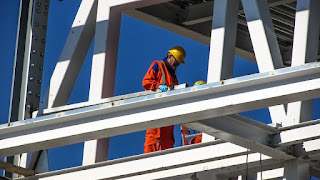Reversing a controversial 2016 decision by his predecessor,
President Donald Trump approved TransCanada Corp’s Keystone XL pipeline in an
announcement March 24, calling it “a great day for jobs and energy
independence.”
Sean McGarvey, president of North America’s Building Trades
Unions (NABTU) was present at the White House for the announcement of the
presidential permit.
The president had campaigned on a promise to approve the
pipeline, and he followed through with an executive order to that effect in
January.
The pipeline will bring more than 800,000 barrels per day of
crude oil from Alberta in Canada into Nebraska.
Jack Gerard, president of the American Petroleum Institute,
said the president’s decision was welcome and would strengthen America’s energy
security. The Canadian government, long a supporter of the pipeline project,
expressed its endorsement of President Trump’s decision as well.
The decision is likely to face legal challenges by opponents
of the pipeline, who argue that the project threatens the environment.
Gerard disagreed. “Today’s action by President Trump is an
important step toward increasing American competitiveness and recognizing that
our industry is part of the solution to advancing U.S. economic and national
security goals,” he said in a statement released March 24.
The East Central Ohio Building & Construction Trades Unions are online at www.eastcentralohiobuildingtrades.com.







